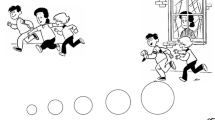Abstract
Purpose
Modern principles for treatment of patients with myelomeningocele include early closure of the neural tube defect, neurosurgical treatment of hydrocephalus and treatment aimed at minimizing contractures and joint dislocations. The aim is to achieve a better survival rate and a better quality of life (QOL). Better ambulatory function is thought to improve the management of activities of daily living. This study focused on evaluating which factors might affect ambulation, function and health-related QOL in children with myelomeningocele.
Methods
Thirty-eight patients with neurological deficit from myelomeningocele were examined in an unbiased follow-up. This included a physical examination using validated methods for ambulatory function and neuromuscular status, chart reviews and evaluation of radiographs in terms of hip dislocation and spine deformity. The Pediatric Evaluation of Disability Inventory (PEDI) was used to measure mobility, self-care and social function, and the Child Health Questionnaire (CHQ-PF50) was used to measure QOL.
Results
Muscle function class, quadriceps strength, spasticity in hip and/or knee joint muscles and hip flexion contracture as well as the ambulatory level all affected functional mobility as well as self-care/PEDI. Patients with hip dislocation, spinal deformity or those who were mentally retarded also had significantly worse functional mobility. Besides being affected by the severity of the neurological lesion, self-care/PEDI was significantly impaired by hip flexion contracture and absence of functional ambulation. General health-related QOL was significantly lower in this patient group than for US norms. Nonambulatory and mentally retarded patients had a significantly lower physical function of their QOL (CHQ).
Conclusions
The severity of the disease, i.e. reduced muscle strength and occurrence of spasticity around hip/knee, affected ambulation, functional mobility and self-care. Acquired deformities (hip dislocation and spine deformity) affected functional ambulation only. Patients with reduced functional mobility and self-care experienced lower physical QOL. Children with myelomeningocele had significantly reduced QOL compared to healthy individuals.



Similar content being viewed by others
References
Bier JA, Prince A, Tremont M, Msall M (2005) Medical, functional, and social determinants of health-related quality of life in individuals with myelomeningocele. Dev Med Child Neurol 47:609–612
Hislop H (1995) Daniel’s and Worthingham’s muscle testing: techniques of manual examination. Saunders, Philadelphia, PA
Bartonek A, Saraste H (2001) Factors influencing ambulation in myelomeningocele: a cross-sectional study. Dev Med Child Neurol 43:253–260
Bartonek A, Saraste H, Knutson LM (1999) Comparison of different systems to classify the neurological level of lesion in patients with myelomeningocele. Dev Med Child Neurol 41:796–805
Hoffer MM, Feiwell E, Perry R, Perry J, Bonnett C (1973) Functional ambulation in patients with myelomeningocele. J Bone Joint Surg Am 55:137–148
Haley SM, Coster WJ, Ludlow LH, Haltiwanger JT, Andrellos PJ (1992) Pediatric evaluation of disability inventory (PEDI). PEDI Research Group, New England Medical Center Hospitals, Boston, MA
Landgraf JM, Abetz L, Ware JE (1999) Child’s health questionnaire. In: The CHQ user’s manual. HealthAct, Boston, MA
American Academy of Orthopaedic Surgeons (1988) Joint motion. Method of measuring and recording. Churchill Livingstone, Edinburgh, UK
Bartlett MD, Wolf LS, Shurtleff DB, Stahell LT (1985) Hip flexion contractures: a comparison of measurement methods. Arch Phys Med Rehabil 66:620–625
Cobb J (1948) Technique for study of scoliosis. In: Blount WP, AAoOS (ed) AAOS instructional course lectures. J. Edwards, Inc., Ann Arbor, MI, pp 261–275
Rendeli C, Ausili E, Tabacco F, Caliandro P, Aprile I, Tonali P, Salvaggio E, Padua L (2005) Assessment of health status in children with spina bifida. Spinal Cord 43:230–235
McDonald CM, Jaffe KM, Mosca VS, Shurtleff DB (1991) Ambulatory outcome of children with myelomeningocele: effect of lower-extremity muscle strength. Dev Med Child Neurol 33:482–490
Mazur JM, Menelaus MB (1991) Neurologic status of spina bifida patients and the orthopedic surgeon. Clin Orthop Relat Res March (264):54–64
Huff CW, Ramsey PL (1978) Myelodysplasia. The influence of the quadriceps and hip abductor muscles on ambulatory function and stability of the hip. J Bone Joint Surg Am 60:432–443
Bartonek A, Saraste H, Samuelsson L, Skoog M (1999) Ambulation in patients with myelomeningocele: a 12-year follow-up. J Pediatr Orthop 19:202–206
Bartonek A, Gutierrez EM, Haglund-Akerlind Y, Saraste H (2005) The influence of spasticity in the lower limb muscles on gait pattern in children with sacral to mid-lumbar myelomeningocele: a gait analysis study. Gait Posture 22:10–25
Asher M, Olson J (1983) Factors affecting the ambulatory status of patients with spina bifida cystica. J Bone Joint Surg Am 65:350–356
De Souza LJ, Carroll N (1976) Ambulation of the braced myelomeningocele patient. J Bone Joint Surg Am 58:1112–1118
Tsai PY, Yang TF, Chan RC, Huang PH, Wong TT (2002) Functional investigation in children with spina bifida—measured by the Pediatric Evaluation of Disability Inventory (PEDI). Childs Nerv Syst 18:48–53
Schoenmakers MA, Uiterwaal CS, Gulmans VA, Gooskens RH, Helders PJ (2005) Determinants of functional independence and quality of life in children with spina bifida. Clin Rehabil 19:677–685
Selber P, Dias L (1998) Sacral-level myelomeningocele: long term outcome in adults. J Pediatr Orthop 18:423–427
Acknowledgments
No benefits in any form have been received or will be received from a commercial party related directly or indirectly to the subject of this article. Funds were received in total or partial support of the research or clinical study. The founding sources were the Swedish-American Foundation, the Swedish Orthopaedic Society, the Swedish Pediatric Orthopaedic Society, the Folke Bernadotte Foundation, the Swedish Medical Society, the Gothenburg Medical Society and the Norrbacka–Eugenia Foundation.
Author information
Authors and Affiliations
Corresponding author
About this article
Cite this article
Danielsson, A.J., Bartonek, Å., Levey, E. et al. Associations between orthopaedic findings, ambulation and health-related quality of life in children with myelomeningocele. J Child Orthop 2, 45–54 (2008). https://doi.org/10.1007/s11832-007-0069-6
Received:
Accepted:
Published:
Issue Date:
DOI: https://doi.org/10.1007/s11832-007-0069-6




